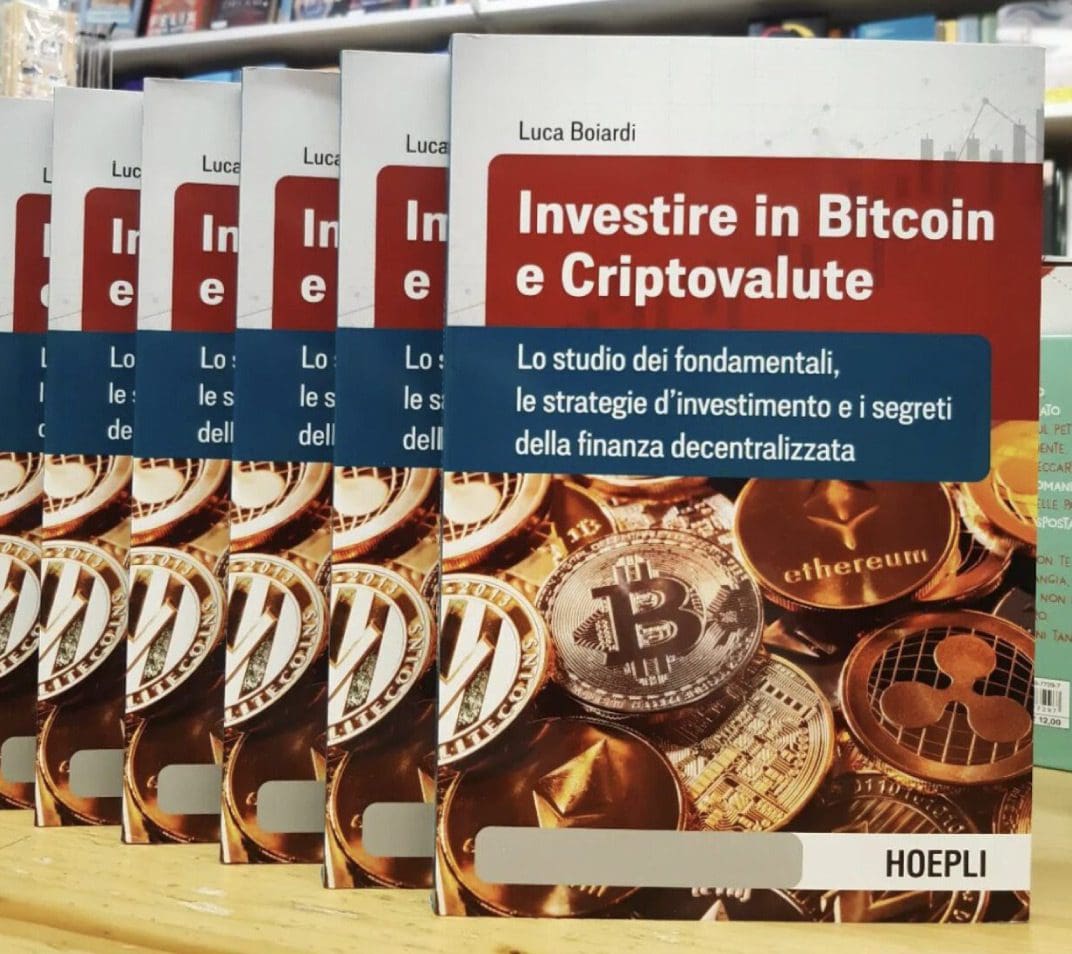Leggi questo articolo in Italiano

Derivatives 101: everything you need to know
By Gabriele Brambilla
Derivatives: complex financial instruments that help us set up comprehensive investment strategies. Let's find out together what derivatives are.

What are derivatives: introduction
Frequently, in comments on videos and posts, our community asks us the derivatives definition.
This should come as no surprise: these are complex instruments that need to be well mastered in order to reduce the risks involved in their use.
So, what is a derivative?
Listening to the requests we receive, here is a quick in-depth look at financial derivatives. We will discover their nature, applications and how they can be used to optimise investment strategies.
However, it will be crucial not to limit ourselves to this reading. Derivatives require in-depth knowledge and underestimating them could lead to avoidable losses.
So, let’s take this article as a way to get off on the right foot. Let’s get started!
Index
What are derivatives in finance?
The definition is simpler than one might expect:
Derivatives are contracts created on an underlying asset (underlying asset) on which their own value depends.
The underlying asset can be of various kinds: a share, a cryptocurrency, a commodity, interest rates and exchange rates, indices. Regardless of this factor, the derivative is built on top of something; example: bitcoin -> derivative, Unicredit shares -> derivative, gold -> derivative.
Derivatives have spread like wildfire since the beginning of this century. Today they are traded all the time, playing a major role in the financial landscape.
There are different types of derivatives. The most famous are Futures, Swaps, FRAs (Forward Rate Agreements) and Options.
Futures are probably the best known to the retail public. In a nutshell, a futures is a derivative contract that creates obligations between two parties, buyer and seller. The former undertakes to buy something on a certain date and at a certain price. Conversely, the second will have to sell the object of the futures within these parameters.
We can classify futures into financialfutures and commodities futures. Financial derivatives have an underlying of a, guess what, financial nature! Commodity ones, on the other hand, relate to agricultural products, metals, oil, gas and so on.
Swaps also create obligations and commitments in the contracting parties. However, they focus on the exchange of monetary capital. The most common are Interest Rate Swaps, which focus on interest rates.
Let us move on to Forward Rate Agreements (abbreviated as FRAs).
The parties agree on a monetary exchange considering the difference between the agreed rate and the reference rate of a principal. Put more simply, the contract allows the interest rate that will take effect at the time of the transaction to be set; depending on changes, the seller may have to send money to the buyer or vice versa. Useful to protect capital if large changes in interest rates are expected.
Finally, options, which are also well known to those who chew a bit of finance. They consist of an agreement between the parties, where the buyer will have the right to buy or sell the underlying asset at a certain price and by/on a fixed date.
To make it clearer: we could acquire the right to buy 10 bitcoins at $20,000 each on 20 December 2022. Or sell 20 Ethereum at $2,000 no later than 5 January 2023.
In the world of finance, there are various forms of derivative contracts. Some are regulated and traded on markets; others are over the counter, privately signed (FRAs are an example).
Besides the type, derivatives are divided into two groups with regard to the obligations of the actors involved: symmetrical and asymmetrical.
Symmetrical derivatives entail obligations for both parties, buyer and seller. In contrast, asymmetrical derivatives only bind the seller.
After this explanation, the complexity behind these products is obvious. While the definition is rather simple to understand, the various declinations and characteristics make derivatives a difficult subject for the less experienced. We therefore recommend avoiding their use without the right knowledge and a good deal of experience.
In the world of cryptocurrencies, futures are the most popular derivatives. Several exchanges offer these instruments, including perpetuals (without maturity).
There are also products that tokenize stocks, commodities and indices. A kind of unconventional derivative, which gives the possibility of investing in a traditional asset while remaining in the crypto sphere.
In addition, derivatives that bring cryptocurrencies into mainstream finance are spreading.
The path is still long and faces resistance in several countries (think of the SEC ‘s objections in the US).
However, it seems likely that it is only a matter of time: more and more people want to invest in cryptocurrencies; many, however, lack the expertise and are looking for avenues in traditional finance. Large investment funds are already trying to meet this growing demand.
What is the purpose of derivatives?
Financial derivatives have several purposes.
First of all, they are perfect for hedging, i.e. hedging against unexpected market movements or adverse events.
A typical example is found in commodity trading such as wheat. Imagine a farmer who fears a future price drop due to a bumper harvest; subscribing to a derivative instrument at the current (higher) price would avoid this problem.
Or, again, think of a company that uses large quantities of oil (Brent or WTI ). In order to hedge against possible rises, it would be sufficient to enter into a future that would guarantee a certain price, independent of incoming movements.
Hedging is also a widely used strategy to protect oneself from value fluctuations in the stock market, indices and whatever else is traded on the stock exchange and markets.
Clearly, no one can be certain about the direction of the market. Therefore, derivatives sometimes lead to losses.
Derivatives are also a valuable tool for speculators.
A typical case is the purchase of options on a certain asset. On the appointed date, if the underlying asset has increased in value compared to the contract date, the speculator will exercise the option and buy the derivative at a lower price. It will then be sufficient to sell it back at the market price to make a profit.
We then mentioned arbitrage, a mechanism also used in several crypto projects.
The concept is simple: take advantage of momentary price deviations between the underlying and the derivative.
Let us imagine MPS shares, with a value of 2€ each (invented figure); the derivative should follow the price perfectly. For various reasons, however, the value of the latter is 1.8€. We could then buy derivatives and sell them as soon as the alignment returns to the correct value (which is certain with regulated instruments). A decent profit at a very low risk.
These are the three main use cases for derivatives, to which other variations and types can be added. In addition, leveraged trading can also come into play, dangerous for beginners but valid (and sometimes indispensable) for experienced traders and investors.
There really is a world to discover and study. Take your time and don’t overdo it: a lot of patience and experience is needed.
"Hedging, arbitrage and speculation are the three best-known applications of financial derivatives"
Crypto exchanges with derivatives
As we said, derivatives are available for a multitude of different assets and products: from MPS shares to bitcoin, from wheat to Moderna shares. Depending on which broker we turn to, we will therefore have access to different derivatives market.
Which are the best crypto exchanges for derivatives? There are several very good ones. The names are already familiar to those with a minimum of experience in the sector; here are a few to consider:
- Binance: ubiquitous, the world’s most famous crypto exchange also offers cryptocurrency futures. Here is Binance’s referral: 20% off fees forever.
- Bitget: high-volume crypto exchange, perfect for those working with futures derivatives. The Bitget referral entitles you to a bonus – take advantage of it;
- Bybit: referral exchange that will meet your expectations. Take advantage of new user bonuses with our Bybit referral now.
"Binance and Bitget: safe choices for even the most demanding customers!"
Financial derivatives: advanced investment strategies
Derivatives allow us to deploy more advanced and comprehensive investment strategies.
For example, combining them with opposite positions allows us to set up hedging operations, perfect for hedging against movements contrary to our expectations. There is also room for arbitrage techniques, as well as speculation. They are multi-purpose products and that is the beauty of them.
Now that you know what derivatives are, you should also understand the risks they entail. They are not just crypto holdings or stock trading. In fact, time variants, thresholds, levers and more come into play; therefore, we need to know exactly what we are doing.
Finally, let us emphasise the importance of abuse-free usage. Not all open trades need to be hedged, just as it is not obligatory to constantly seek arbitrage. We experiment and choose the trades that best suit our needs, always being careful to achieve the best possible performance.
Derivatives are and will always be there: we can use them when it is profitable and avoid them if not necessary.
Do you already use derivatives? Or would you like to get closer to this world? We look forward to your comments on our social channels.
